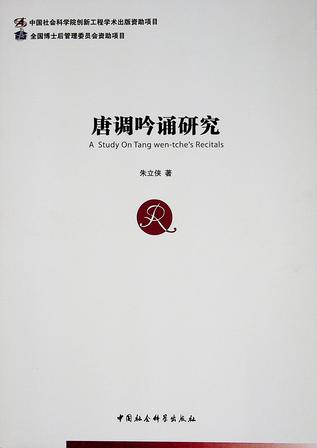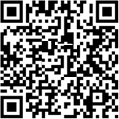内容简介
作者简介
目录
Recital contains the concepts of singing,reciting and chanting.The narrow concept of recital means a reading method using vocal variety based on the character of Chinese language.The broad concept of recital contains singing,reading,and the narrow concept of recital.Recital is a combination of literature,language and music.It expresses the beauty of the sounds inside ancient literary works in a musical way,which is based on language.As an efficient,graceful way of reading and learning,recital improves memory,arouses interest,helps to understand and appreciate the beauty of literature.Further more,recital is a good way of teaching,writing,cultural inheritance,health maintenance and self-cultivation.Recital has a long history in China.The tradition of recital formed in pre-Qin period.The widespread recital rose in Han Dynasty,became popular in Wei and Jin Dynasties,ripened in Tang and Song Dynasties.More and more schools had emerged since Yuan Dynasty as the popularity of recital,and the theory had became mature gradually.Recital declined and was discarded by education system.Meanwhile,scholars started to pay attention to it.The work of collecting,studying and popularizing recital has been launched gradually since 1949,and there is a sign of revival in these days.This paper studies the biggest one of recital schools in modern times:Tang Wen-tche's recital.The founder,Professor Tang Wen-tche,is an outstanding expert at ancient prose,Confucian classic,education and recital in the early 20th century.Tang's recital is an important method.Tang Wen-tche used to conducted moral and disposition education.It is a reading method that expresses the spirit of text with vocal variety.Its essential feature is that different genres use different tunes,and prose is speciol,which the repetitive end of the melody,6i5.Tang Wen-tche left us with lots of phonographic reading records of different genres such as pre-Tang poems,Ci,Qu,scriptures,prose,etc.The methods of reading vary by genres,and the sources are different.I believe that his recital mainly came from Taicang of Jiangsu province,his hometown,while the recital of ancient prose came from Tongcheng School.Tang's recital is a combination of Jiang-nan tune and Tongcheng's theory.Prof.Tang's students in two generations learned and innovated,making Tang's recital the most influential recital school in 20th century.Chapter four to chapter six are the core part in this paper and the main part of Tang's recital study:the study of its tune and theory.Tang Wen-tche is the pioneer in the history of Chinese Literary Criticism.His theory is the conclusion of ancient theory of“spirit of ancient prose”and a development of Tongcheng School's prose theory.His method of reading prose is the conclusion of ancient recitals theory.Tang's recital is so valuable that it should be a part of modern history of Chinese literature.Tune study includes rhythm,melody,phonation and breath.New ideasare proposed in the study of this part.The rhythm of reading poems in The Book of Songsby Tang's recitals is three claps,while that The Songs of Chuand other ancient poems are four clap.Every sentence is divided into two parts based on key points such as rhythm point or function word.Each of the last two characters of the second part is one clap,others remain one clap.(If there are too many characters left in the second part,then every two characters become one clap.)The rhythm of pre-Tang poetry is similar with singing and is more even.The rhythm of modern style poetry and Ci are divided by their metres.The rhythm of reading ancient prose by Tang's recitals is influenced by sentence pattern and the quality of text.Tang Wen-tche used different tunes when reading text of different genres.The Book of Songs,The Songs of Chuand pre-Tang poetry share one tune,the main melody of which is 661.35 and 2231.1..The development of melody is based on the art of composition of the text.When reading modern style poetry,there is no permanent tune,the melody is based on the characters of tones,therefore,depends on every single word.Yet at the end of the melody,we always have 653.When reading scriptures,the basic melody is 661.35,which is same as pre-Tang poetry,and the end of the melody is short.When reading ancient prose,the rhythm is average,every one character occupies a clap,and the entering tone character occupies half of the clap.The melody is made by two cyclic tunes.The tunes are plain,containing a permanent melody at the end,which is obviously longer and more saltatorial.This is the sign of being Tang's recital or not.The range of Tang's recitals is narrow,within one octave.It uses the ancient Chinese fifth formal scale.The features of the timbre in Tang's recitals are creaky voice.Its unique toning method is nasal resonance.Tang's recital uses abdominal breathing,thoracic breathing and anti- abdominal breathing to control breath when reading texts.The study of Tang's recital theory has been launched before,but not enough.In this paper,I combine Tang's recital with his thoughts like studying prose with music,Neo-Confucianism and poetry.I also reveal his recital theory and practice system in a comprehensive perspective.Tang Wen-tche's reading method is the most perfect recital method in modern times.Theoretically speaking,it inherits Tongcheng School's theory of‘embodying spirit in pronunciation’on one hand,and creates Yin-yang-gang-rou theory based on Chinese ancient temperament and Zeng Guofan's writing method on the other hand.In practice,Tang Wen-tche combined teaching method of reading and writing,proposing the way of “reading thirty times”,including four steps:relying on sound,looking for spirit,finding the soul,entering the realm.This new teaching method works well in practice.I present that the steps and requirement of reading a text with Tang's recitals are:distinguish its genre and character,pay attention to its art of composition,analysis its rhythm of sound,express its spirit,enter in its realm,etc.Only by accomplishing all these steps can it be called excellent.In the last chapter,I discussed the function,significance and promotion value of Tang's recital,I hope this can be combined with today's promotion work,and helps to study the method of promotion.Tang's recital has many functions including expressing the spirit of prose,experience of emotion,helping with writing,self-cultivation and correcting convention.Furthermore,Tang's recital has a profound significance in practice,and can play an important role in construction of spiritual civilization and school education.Therefore,it's necessary to inherit and popularize Tang's recitals.This paper is based on lots of field work,using studying ideas and methods that are efficient in literature,language and music.It discusses the feature,rule and method of recitals,especially Tang's recital.It focuses on tone and theory,in order to present theoretical support for its promotion.Key words:Chanting,Tang's Recital,Tang Wen-tche,theory of reading,Tongcheng School,spirit of ancient prose
全部显示∨
朱立侠,字履儒,号愚斋,生于甲子年,云南罗平人。本科毕业于中央民族大学中国语言文学系,硕士毕业于中山大学中文系,研究方向为诗文创作与批评,博士毕业于北京语言大学,研究方向为汉语韵律诗学。后入首都师范大学文学院工作,并任中华吟诵学会副秘书长。研究领域涉及诗词创作、传统吟诵、私塾教学方法、朱子学、周易等方面,近年来致力于传统吟诵之抢救、研究与推广,尤其钟情唐调吟诵。著有《吟诵丛话》及诗集《康园吟稿》、《北游集》等。
全部显示∨
绪论
第一章 吟诵概论第一节 吟诵概念辨析
第二节 吟诵的历史和现状
第三节 吟诵的功能和价值
第二章 唐文治的教育理念与吟诵实践第一节 “实业救国”与吟诵
第二节 “读经救国”与吟诵
第三节 “性情教育”与吟诵
第三章 唐调的定义与源流第一节 唐调的定义
第二节 唐调来源考
第三节 唐调的流传情况
第四章 唐调的理论研究第一节 唐文治的文章学理论
第二节 唐文治的吟诵理论
第三节 唐调理论与桐城派的关系
第五章 唐调的腔调研究第一节 唐调的节奏分析
第二节 唐调的旋律分析
第三节 唐调的发音和用气分析
第六章 唐调的读法研究第一节 唐调的吟诵方法
第二节 唐调的吟诵要求
第七章 唐调的价值与推广第一节 唐调的功能
第二节 唐调的现实意义
第三节 唐调的推广建议
结语
附录读文法(国学丛谈讲稿)
唐蔚芝先生读文法讲词
唐蔚芝先生读文法纲要
《读文法笺注》序
国学大师唐蔚芝先生读文灌音片缘起
参考文献
索引
后记

